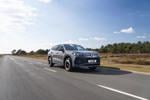Salary sacrifice schemes: Tax changes add to salary sacrifice appeal
by David Hosking, managing director, Tusker
 A salary sacrifice scheme allows an employee to surrender part of their salary under the terms and conditions of their employment in return for an employer’s agreement to provide them with a non-cash type benefit.
A salary sacrifice scheme allows an employee to surrender part of their salary under the terms and conditions of their employment in return for an employer’s agreement to provide them with a non-cash type benefit.
Because the cost of this benefit is deducted from the employee’s gross salary before statutory deductions, he or she is able to save income tax and National Insurance contributions at either 31% or 41%.
Last year’s Budget saw reductions in benefit-in-kind (BIK) tax (now as low as 10% for the most environmentally-friendly vehicles) and have made the provision of a car, via a salary sacrifice scheme, to employees who wouldn’t normally be entitled to a company car highly attractive.
Employees will face a charge for BIK taxation (typically 10-13%) but, as the scheme promotes lower polluting cars – typically sub-160g/km of CO2 – this is more than offset by the tax and National Insurance savings (31-41%).A salary sacrifice scheme also provides an opportunity for the employer to save NI contributions.
It also promotes environmental responsibility by supplying staff who may typically drive older, more polluting cars with brand-new, more environmentally-friendly vehicles and also addresses duty-of-care issues including the provision of Class 3 business motor insurance, early termination and GAP insurance, full maintenance, and European roadside assistance.
Salary sacrifice offers employers an opportunity to provide their employees with a real and quantifiable benefit at no cost (or even a profit) and with little additional administration or risk.
Company cars: Recession may give company cars a new lease of life
by Geoffrey Bray, chairman, Fleet Support Group
 The recession could give a new lease of life to company cars.
The recession could give a new lease of life to company cars.
A combination of new company car-related corporation tax allowances, low benefit-in-kind (bik) tax rates on environmentally-friendly company cars, widespread corporate concerns over grey fleet management and the expense of cash alternatives coupled with their acknowledged administrative complexity, all play to the strengths of company cars.
Last year’s introduction of a 10% BIK tax rate on petrol-engined cars (13% for diesel cars) with CO2 emissions of 120g/km and below makes company cars financially attractive.
Factor in the capital allowance changes that favour cars with CO2 emissions of 160g/km and below and the scenario becomes even more attractive as an alternative to cash – first year allowances are 100% on company cars with emissions of 110g/km and below.
Figures from KPMG illustrate the cash-saving potential offered by encouraging staff into ‘green’ cars. For example, an employee choosing a Toyota Aygo 1.0 VVT-i
(106g/km) and taxed at the basic 20% rate could pay as little as £12 per month in company car tax.
To fund the car through a private lease arrangement could cost an employee around £3,000.
However, as a company car, the Aygo would cost the employee less than £2,200.
Employers also benefit.
Using the same Aygo, the saving through the employee’s salary reduction is more than £3,300, against the cost of providing a company car of around £2,950.
Car pricing: Look at the whole picture when making decisions
by Mark Sinclair, director, Alphabet
 They say that truth is the first casualty of war. Recession does something similar to rational car pricing.
They say that truth is the first casualty of war. Recession does something similar to rational car pricing.
On the one hand, list prices in the UK are going up as manufacturers grapple with a falling pound and rising raw material costs.
On the other, discounts of 15%, 20% or even 25% are now commonplace.
At first sight, this may seem like a welcome bonanza for fleet car buyers. But there’s a catch.
The unprecedented disconnect between up-front vehicle prices and the real bottom line cost of ownership spells danger for price-based acquisition strategies, since the most heavily-discounted cars are those that cost most to run and which therefore attract higher CO2 tax rates.
It might seem, then, that the solution is to switch to a strategy based on contract rental rates and expected fuel costs.
That takes care of depreciation and fuel and is sometimes thought of by users as a wholelife cost strategy.
A true wholelife cost approach, however, takes into account a variety of other factors, such as employer’s National Insurance, that make a significant difference to the actual lifetime cost outcome.
It’s essential to make sure that you really are looking at the whole picture.
With UK financial policy in totally uncharted waters, no-one knows where prices and tax rates are heading.
Here, the dedicated wholelife cost software used by major fleet suppliers helps by allowing a wide range of scenarios to be modelled.
It’s not perfect but it’s far better than risking becoming a hostage to fortune by pinning the future of your fleet on today’s distress pricing trend.













Login to comment
Comments
No comments have been made yet.